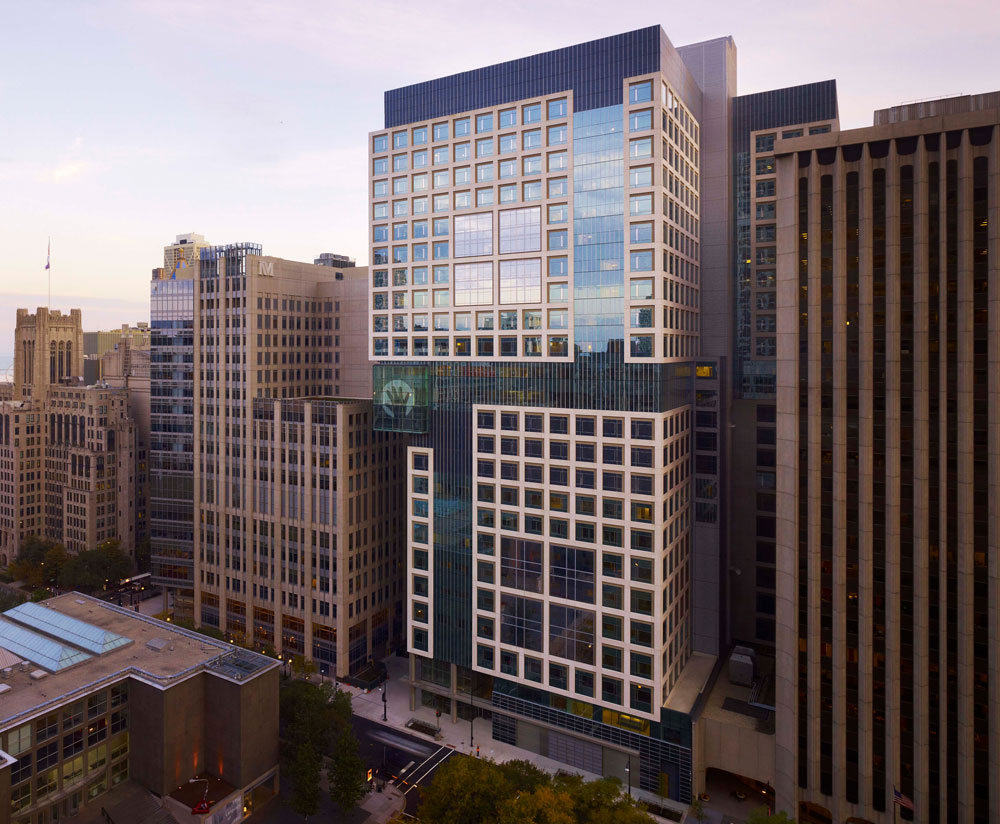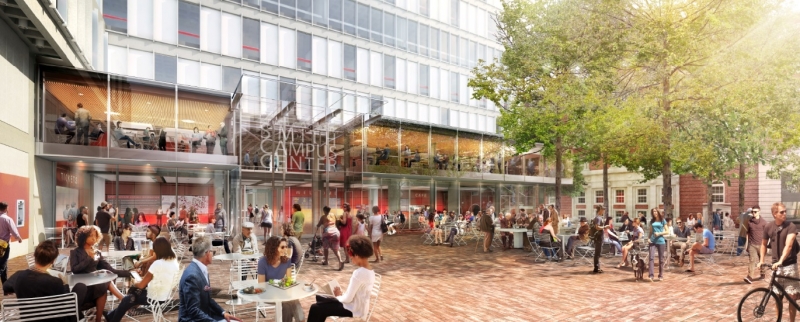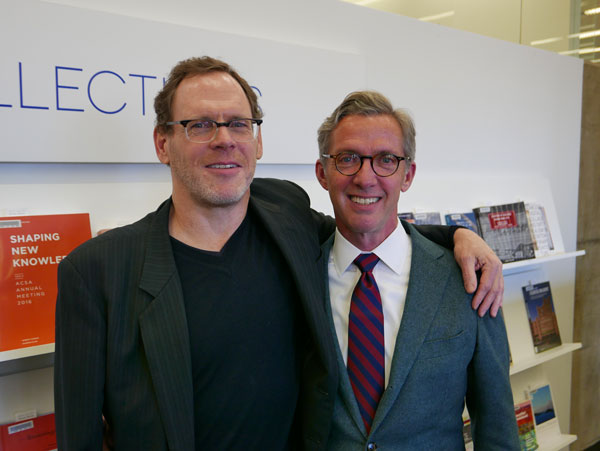Furthering Innovation for the Loeb Fellowship: Leif L. Selkregg LF ’89
After almost two decades of working with Harvard University to support transformational capital expansions, Leif L. Selkregg LF ’89 is increasing his philanthropic support of the Harvard Graduate School of Design (GSD) and the Loeb Fellowship with one of the largest gifts to the Fellowship in its 46-year history. The Selkregg Loeb Fellowship Innovation Fund will allow the Loeb Fellowship Curator, John Peterson LF ’06, to explore ways to innovate and expand, building above and beyond the already efficacious program.
Raised in a community-minded family in Alaska, Selkregg began his career during the construction of the Trans-Alaska Pipeline and trained as an architect at the University of Oregon. He moved to Cambridge in 1988 to study at the GSD as a Loeb Fellow. The Loeb Fellowship represents a broad spectrum of accomplished mid-career practitioners from around the nation and countries around the world—it has re-directed the trajectory of countless careers and forged life-long bonds between professional collaborators. Embracing the year of freedom to step away from his professional schedule, he engaged in a stimulating study of master planning within the structured and supportive environment of the GSD and Harvard. “Being a Loeb Fellow was a special life experience—a gift of exposure to opportunities and connections to people,” Selkregg said.
Through his Loeb Fellowship experience and connections, he began his first international endeavor to develop and lead a program management division for an international construction company in flourishing London, focused on a large-scale master plan for Canary Wharf. Through his work in both Alaska and London, Leif was inspired by the scale and intensity of master planning and urban development. It gave him a big picture view of the role of design and opened his mind up to the range of possibility and reach of great design and design professionals, “I was influenced by the fact that Alaska had this huge boom…and we basically built [whole] cities.” Out of his Loeb Fellowship experience, Selkregg’s passion for program and project management was born.
Selkregg’s work rendered him more interested in the impact design could have than on design itself. “The design that I was engaged with was fantastic…but I was and still am, more attuned to the [overall] human ambition to build,” he said. “A bigger picture, programmatic approach becomes a catalyst for an even larger impact great design can make. Program management then becomes a vehicle that enables that design to come to fruition,” said Selkregg.

Ann & Robert H. Lurie Children’s Hospital of Chicago. Photos courtesy of Nick Merrick/Hedrich Blessing.
This global experience catapulted Selkregg into working for leading companies across the world providing program management on large-scale projects. Driven by relationship and entrepreneurship, Selkregg has built program management companies including Rise, a firm repeatedly ranked by Engineering News-Record as one of the top U.S. program management companies, and his latest company Ascent that serves clients from offices in Boston, Chicago, Seattle, and Anchorage. With Ascent, Selkregg is collaboration-focused—he deftly assembles teams to empower great design. Some of Ascent’s current projects include: A major transportation infrastructure expansion program in Boston; Ann & Robert H. Lurie Children’s Hospital of Chicago’s facilities master plan development and implementation; the recently installed Sky Landing in Chicago, the first permanent work of art by Yoko Ono in the Americas; as well as a presidential library for Harvard College graduate Theodore Roosevelt AB 1880.
Selkregg has a long-standing commitment to the Harvard community and the City of Boston. “My experience as a Loeb Fellow anchored me here. I’ve built a capacity around my work at Harvard that allowed me to participate in and engage on campus, and I embrace continuing to do this,” he said. Selkregg and his team managed all aspects of the Harvard Art Museums project completed in 2013, which consolidated Harvard’s three museums and four research centers into a single, state-of-the-art facility. These components constitute a unique institution dedicated to acquisition, preservation, research, interpretation, and education. Ascent is currently leading the team providing project management services for Harvard’s Smith Campus Center. The project, to be complete in 2018, is transforming the Josep Lluís Sert-designed building in the heart of Harvard Square into a 24-hour Campus Center, which will include new formal and informal gathering space, food options, fireplaces, landscaped gardens, and a roof terrace.

Rendering of the renovated Smith Campus Center at Harvard University.
The Loeb Fellowship’s four decades of success have followed a well-chartered, stable path. What innovations are in its future based on this gift? Selkregg is embracing risk and uncertainty for “John [Curator Peterson] to have the capacity and autonomy to engage in new forms of research and discovery.” According to Peterson, “It seems only natural for the Loeb Fellowship, which has been on a clear and successful path, to ask questions, pursue new ideas, and reflect on opportunities that look to further its mission while maintaining its core practices and values. Selkregg’s philanthropic vision is rare. The majority of philanthropy seeks certainty and planned outcomes. Selkregg is investing in possibilities and exploration, without any guarantee of conventional success. Investments like this come with a responsibility to do something worthy of the faith in which it’s given.” As the Founder of Peterson Architects in 1993 and the nonprofit Public Architecture in 2002, Peterson began in January 2016 as Curator of the Loeb Fellowship. After earning degrees in both fine arts and architecture from the Rhode Island School of Design, he centered his career around public interest design.
According to Selkregg, his parents instilled his spirit of philanthropy. “At one level, philanthropy is an obligation to society, and on the personal level, I see it as a stretch—I take a purposeful approach and feel that it is my obligation to give back to the productive development of humanity,” he remarked. He contributes to individuals and institutions he trusts will execute on that vision.
As Loeb Fellows, Selkregg and Peterson are connected as members of the Loeb worldwide network of practitioners supporting equity and justice through the built and natural environments. Through Selkregg’s gift and Peterson’s vision and efforts, the collaboration will elevate the future work of the Loeb Fellows and broaden the GSD’s social impact.

